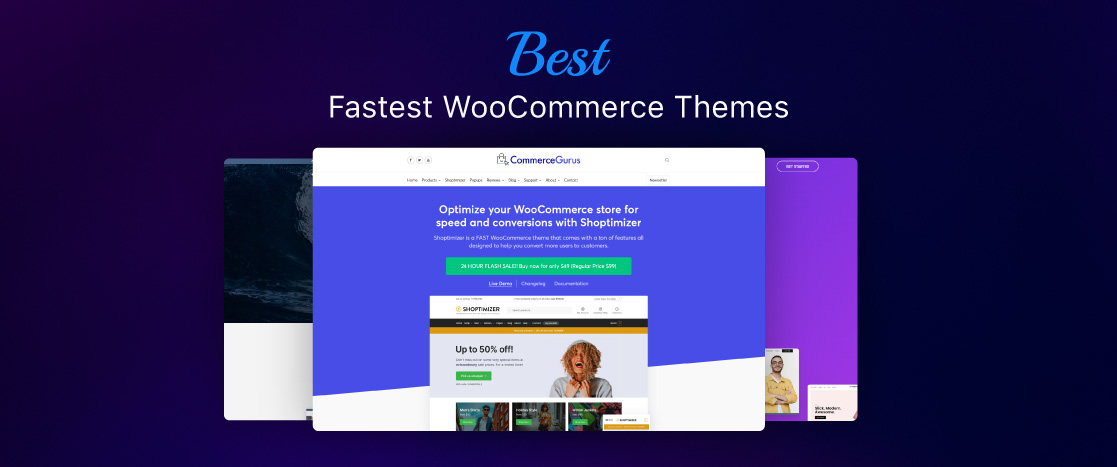
How to Write High Converting Ecommerce Product Descriptions: Best Practices
- Importance of Product Descriptions in Ecommerce
- Common Mistakes in eCommerce Product Descriptions
- Understanding Your Target Audience
- Structuring Your Product Descriptions
- Highlighting Features and Benefits
- Writing for Users and Search Engines Alike
- Leveraging Social Proof and Trust Signals
- Using Engaging Visuals and Media
- Testing and Analyzing Product Descriptions
- Conclusion
In the competitive world of ecommerce, a compelling product description is more than just a necessity—it’s a powerful tool that can make or break a sale. While product images capture attention, it’s the product descriptions that convince customers to click “Add to Cart.”
This blog post will explore how to write high-converting ecommerce product descriptions, using best practices that combine creativity with data-driven strategies.
By the end, you’ll know how to craft descriptions that not only attract but also convert visitors into loyal customers.
- Importance of Product Descriptions in Ecommerce
- Common Mistakes in eCommerce Product Descriptions
- Understanding Your Target Audience
- Structuring Your Product Descriptions
- Highlighting Features and Benefits
- Writing for Users and Search Engines Alike
- Leveraging Social Proof and Trust Signals
- Using Engaging Visuals and Media
- Testing and Analyzing Product Descriptions
- Conclusion
Importance of Product Descriptions in Ecommerce
When shopping online, customers don’t have the luxury of touching or trying a product before purchasing it. This is where product descriptions come in—they serve as the bridge between the physical and digital shopping experience. A well-crafted product description provides all the necessary details, answers potential questions, and builds trust.
It also helps in search engine optimization (SEO), ensuring that your products appear in relevant search results. Effective ecommerce product descriptions are essential for increasing conversion rates and reducing return rates, making them a critical component of any ecommerce strategy.
Common Mistakes in eCommerce Product Descriptions
Unfortunately, many ecommerce businesses fall into the trap of writing generic, uninspiring product descriptions. These often include vague language, overused jargon, and a focus solely on features rather than benefits.
Such descriptions fail to engage the customer and can lead to high bounce rates. To write the best ecommerce product descriptions, it’s crucial to avoid these pitfalls and focus on what truly matters to your audience.
Understanding Your Target Audience
Know Your Buyer Persona
Before you start writing product descriptions, you need to know who you’re writing for. A buyer persona is a detailed profile of your ideal customer, including demographics, interests, needs, and buying behavior. Understanding your buyer persona allows you to tailor your descriptions to speak directly to your audience, using language and tone that resonates with them. For example, a tech-savvy audience might appreciate detailed technical specifications, while a fashion-forward crowd might be more interested in style tips and outfit inspiration.
Creating a buyer persona involves researching your existing customers, analyzing website analytics, and even conducting surveys or interviews. Once you have a clear picture of your target audience, you can write product descriptions that address their specific pain points and desires.
The Role of Customer Feedback and Reviews
Customer feedback is a goldmine of information that can help you craft effective product descriptions. By analyzing customer reviews, you can identify common questions, concerns, and praises. This insight allows you to address potential objections in your descriptions and highlight features that customers love. For instance, if multiple customers mention how comfortable a pair of shoes is, you can emphasize this benefit in the description.
Structuring Your Product Descriptions
The AIDA Model (Attention, Interest, Desire, Action)
The AIDA model is a classic marketing framework that can be applied to writing product descriptions:
- Attention: Start with a compelling headline or the product’s name. This should grab the reader’s attention and make them want to learn more.
- Interest: Build interest by highlighting the unique selling points (USPs) of the product. This could be anything from superior materials to innovative design.
- Desire: Create desire by emphasizing the benefits of the product. Explain how it will improve the customer’s life, solve a problem, or fulfill a need. Use descriptive language that appeals to the senses and emotions.
- Action: Finally, include a clear call-to-action (CTA) that encourages the customer to make a purchase. Phrases like “Buy now,” “Add to cart,” or “Get yours today” can motivate the reader to take the next step.
Creating Scannable Descriptions
Online shoppers often skim through content, so it’s important to structure your descriptions in a way that’s easy to read. Use bullet points to list key features and benefits, and break down the text into digestible sections. Headers, bold text, and white space can also make your descriptions more visually appealing and easier to navigate.
For example, a product description for a smartwatch might include sections like “Key Features,” “How It Works,” and “Why You’ll Love It,” each with a few bullet points that highlight important details.
Highlighting Features and Benefits
The Difference Between Features and Benefits
One of the biggest mistakes in product description writing is focusing too much on features and not enough on benefits. Features describe what a product is or what it has, while benefits explain what those features do for the customer. For example, instead of just stating that a jacket is made of waterproof material (feature), explain that it will keep the customer dry and comfortable in the rain (benefit).
To write high-converting eCommerce product descriptions, it’s essential to turn features into benefits. Ask yourself, “Why does this feature matter to the customer?” and use the answer to craft a benefit-driven description.
Creating a Value Proposition
Your product description should clearly communicate why your product is better than the competition. This is your value proposition. It could be anything from superior quality, exclusive features, or a lower price point. Make sure to highlight these unique selling points (USPs) prominently in your description.
For example, if you’re selling organic skincare products, your value proposition might be that your products are made with 100% natural ingredients, free from harmful chemicals. Emphasize this in your descriptions to attract health-conscious consumers.
Using Power Words to Influence Emotions
Words have the power to influence emotions and drive actions. Certain words, known as power words, can make your product descriptions more persuasive and compelling. Words like “luxurious,” “innovative,” “exclusive,” “effortless,” and “guaranteed” can evoke strong emotions and create a sense of urgency.
For instance, instead of saying “This sofa is comfortable,” you might say “This sofa offers luxurious comfort that makes you feel right at home.” The latter is more likely to resonate with potential buyers and encourage them to make a purchase.
Writing for Users and Search Engines Alike
Keyword Research and Integration
To ensure your products appear in relevant search results, you need to optimize your product descriptions for search engines. Start by conducting keyword research to identify the primary and long-tail keywords your target audience is using. Tools like Google Keyword Planner, Ahrefs, or SEMrush can help you find these keywords.
Once you’ve identified your keywords, integrate them naturally into your product descriptions. Avoid keyword stuffing, as this can make your descriptions awkward to read and may even result in search engine penalties. Instead, focus on creating a seamless flow where keywords fit naturally within the context.
For example, if your primary keyword is “Ecommerce Product Descriptions,” you might write: “Our guide to crafting high-converting Ecommerce Product Descriptions will help you increase sales and improve customer satisfaction.”
Crafting Meta Descriptions
Meta descriptions are the brief snippets that appear in search engine results under the page title. Although they don’t directly impact SEO rankings, they play a crucial role in influencing click-through rates (CTR). A well-written meta description can entice users to click on your product link over others.
When writing meta descriptions, keep them concise (around 150-160 characters) and persuasive. Include your primary keyword and a clear value proposition to encourage clicks.
For example: “Discover how to write Ecommerce Product Descriptions that boost conversions. Learn best practices and see product description examples that work.”
Optimizing for Voice Search
With the rise of voice-activated devices like Amazon’s Alexa and Google Assistant, voice search is becoming increasingly important in eCommerce. Voice search queries tend to be longer and more conversational, so it’s important to optimize your product descriptions accordingly.
To do this, try to include natural language and question-based phrases in your descriptions. For example, instead of just stating “waterproof jacket,” you might include a phrase like “What makes this jacket perfect for rainy days?” This approach can help your products rank better in voice search results.
Leveraging Social Proof and Trust Signals
Incorporating Customer Reviews and Testimonials
Social proof is a powerful psychological phenomenon where people rely on the actions and opinions of others to make decisions. In eCommerce, customer reviews and testimonials are a form of social proof that can significantly impact purchasing decisions.
Incorporating customer reviews into your product descriptions can add credibility and build trust. Highlighting a few positive reviews or testimonials within the description can reassure potential buyers and encourage them to proceed with their purchase.
For example, you might include a section in your product description that says, “Here’s what our customers are saying:” followed by a few glowing reviews. This not only builds trust but also provides additional information that can help the customer make a decision.
Utilizing Trust Badges and Certifications
Trust badges and certifications are visual cues that signal to customers that your site is secure and your products are trustworthy. These can include SSL certificates, money-back guarantees, free shipping icons, and industry certifications.
Including trust badges in your product descriptions or near the CTA can help reduce buyer anxiety and increase conversions. For instance, a description might end with, “Order now with confidence—our products are backed by a 30-day money-back guarantee.”
Using Engaging Visuals and Media
Importance of High-Quality Images
While this guide focuses on product descriptions, it’s important to note that visuals play a crucial role in the overall presentation of your product. High-quality images can complement your descriptions by providing a visual representation of the product, making it easier for customers to envision using it.
Make sure your images are clear, well-lit, and showcase the product from multiple angles. Include close-up shots of important features and, if possible, lifestyle images that show the product in use.
For example, if you’re selling a kitchen gadget, include images of the product in action, such as being used to prepare a meal. This helps the customer visualize how the product would fit into their own life.
Videos and Interactive Media
Videos are an incredibly effective way to engage customers and provide a more immersive shopping experience. A product demo video or a 360-degree view of the product can give customers a better understanding of the product, its features, and how it works.
Including a short video in your product description can increase engagement and conversions. For example, a clothing retailer might include a video of a model walking in the dress to show how it moves and fits.
Alt Text for Images
Alt text, or alternative text, is a brief description of an image that helps search engines understand what the image is about. It’s also used for accessibility, allowing visually impaired users to understand the content of the image through screen readers.
When writing alt text, be descriptive and include relevant keywords, but avoid keyword stuffing. For example, instead of “blue dress,” you might write, “A flowing blue summer dress with floral patterns.”
Testing and Analyzing Product Descriptions
A/B Testing for Product Descriptions
Even the most well-written product descriptions can benefit from testing and optimization. A/B testing involves creating two different versions of a product description and testing them against each other to see which performs better in terms of conversions.
You might test different headlines, formats, or even the inclusion of certain features or benefits. The key is to track key metrics such as click-through rates, time spent on the page, and conversion rates to determine which version is more effective.
For example, if you’re unsure whether to focus on a product’s eco-friendly materials or its durability, you can create two versions of the description—one that emphasizes each—and see which one resonates more with your audience.
Analyzing Customer Behavior and Feedback
In addition to A/B testing, it’s important to regularly analyze customer behavior and feedback to refine your product descriptions. Tools like Google Analytics and heatmaps can provide insights into how customers interact with your product pages, while direct customer feedback can highlight areas for improvement.
If customers frequently ask the same questions or express confusion about a particular feature, consider revising your description to address these concerns. Continuous improvement based on data and feedback is key to maintaining high-converting eCommerce product descriptions.
Conclusion
Crafting high-converting eCommerce product descriptions is both an art and a science. By understanding your target audience, structuring your descriptions effectively, highlighting benefits, and optimizing for SEO, you can create descriptions that not only attract but also convert. Incorporating social proof, engaging visuals, and ongoing testing further enhances the effectiveness of your product pages.
Writing compelling product descriptions is an ongoing process that requires continuous learning and adaptation. As consumer preferences and SEO algorithms evolve, so should your approach to product description writing. Start implementing these best practices today, and watch as your ecommerce product descriptions lead to higher engagement, satisfaction, and, ultimately, sales.





